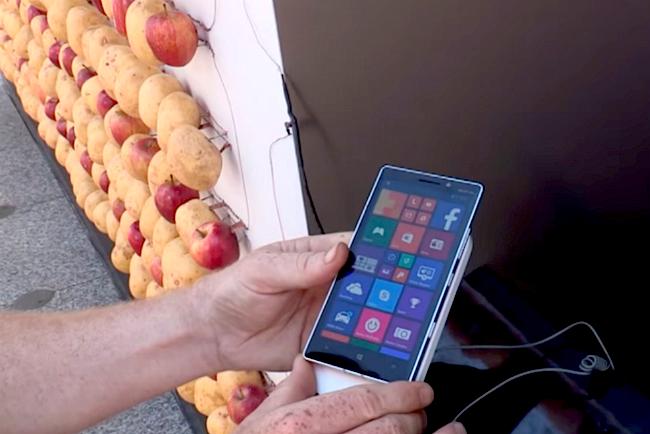
Part science experiment, part art installation, and (large) part publicity stunt, the Microsoft-owned mobile firm recently teamed up with multimedia artist Caleb Charland to create an organic charging wall comprising 800 potatoes and apples, among other bits and pieces.
While creating an electrical current from edible items has long been the stuff of science class experiments, Charland’s project took the experiment to the extreme, enabling him to charge a Lumia 930 smartphone in the process.

The installation, which was set up on a busy shopping street in London over the weekend, also used copper wire and galvanized nails to help create the necessary electrical current, which was then fed through to the Lumia handset to bring it back to life.
In case you’ve forgotten the details of your primary-school science class, Nokia’s Rhea Fri explains:
“Voltaic batteries are composed of two metals that are connected and suspended in an acidic solution. In Caleb’s installation, the metals were copper and zinc (from the galvanized nails).
“They comprised the positive and negative electrodes – the parts of a battery where electrical current enters and leaves. Meanwhile, the acid from the fruit and vegetables (phosphoric from the potatoes and ascorbic from the apples) provided an electrically conductive solution.”
Charland’s hand-built wall-based circuit of apples, potatoes and metal created an electrical current equating to an average of 20mA and 6 volts, Fri said.
Commenting on his installation, the Maine-born artist said, “This work speaks to a common curiosity we all have for how the world works, as well as a global concern for the future of Earth’s energy sources.”
But possibly the best thing about Charland’s battery is that you can eat it once your device reaches full power. Just remember to take the nails out first.
[Source: Nokia]


